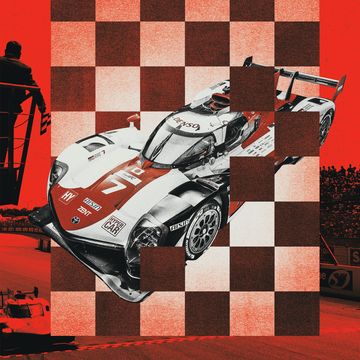The guitar player wrenches the column shifter, and the van rolls drowsily out of suburbia. The singer farts and yells, “Window!” The bass player groans. A Fritos bag rustles. Black Flag rages on a boombox. The pedal drops. The engine wheezes. The highway opens up.
Another punk-rock concert tour is underway.
This story originally appeared in Volume 15 of Road & Track.
The dream of a musician’s life on the road may reflect in the stainless façade of a luxury tour bus, but more often, the reality plays out between the steel panels of a humble trade van. For decades, ladder-on-frame vans have carried payloads of impoverished punk, heavy-metal, indie, and other acts, like ramshackle, heat-seeking missiles homing in on a shadowy audience desperate to be found.
Aging tour vans supported young outfits that flamed out after a few gigs and those that launched the careers of legends. They helped put tiny music venues on the map—like O’Cayz Corral in Madison, Wisconsin, and the Grog Shop in Cleveland Heights, Ohio—and provided a moving platform for hardworking bands lacking chart success to sustain over time. One of those bands is the Melvins.
Formed in Washington State during the early Eighties, the Melvins, with their heavy experimental rock and album prolificacy, earned themselves a global following, which they’ve cultivated by touring relentlessly, usually in vans, for more than three decades.
These days, the Melvins crisscross the U.S. mostly in Mercedes-Benz Sprinter vans, according to drummer Dale Crover, but they started out in a two-tone 1972 Dodge Royal Sportsman once owned by singer and guitarist Buzz Osborne. Dubbed “the Melvan,” it hauled the band to gigs around central Washington, sometimes with a friend named Kurt Cobain at the wheel, and on the Melvins’ first nationwide tour in 1986.
“We were on this tour that we shouldn’t have been on at all,” Crover remembers. The Melvan “had already broken down a bunch before, many times. It was already old by then, and it was pretty beat-up. At every gas stop, it was a quart low of something.”
Mechanical issues were not the only burden the band endured in the Melvan. “It was definitely a cop magnet,” Crover says.
The Cobain connection made headlines in 2012, when the van’s then owner put the Melvan up for auction. According to provenance, Cobain had used a Sharpie to sketch portraits of the members of Kiss in full Seventies-era makeup on the van’s side, making it an artifact in his deeply examined rise from Aberdeen punk kid to immortal rock god.
Cobain’s contribution was perhaps too ephemeral to elevate the Melvan to big-ticket memorabilia; it eventually sold for a fraction of its initial six-figure reserve in a private transaction to a couple in Olympia, Washington. (They also own an apartment where Cobain once lived.)
Recently, pop-culture YouTuber ScottOnTape visited the Melvan at its current home in a remote three-car garage outside Olympia. Scott, who declined to give his last name, produced a walk-around video, uncovering the 50-year-old Sportsman after a decade out of the spotlight.
The Melvan hasn’t been driven in at least 25 years, according to its owners. Save for Cobain’s sketch, the exterior is a pastiche of spray-can graffiti, dirt, scratches, and rust patina. The upholstery covering its bucket seats is shredded. There’s surface rust on the ceiling and an “I Brake for Rodeos” bumper sticker below one of its picture windows. Extending across the cargo floor is a filthy pea-green carpet whose fibers, it’s fair to assume, bear untold substances.
Indeed, ravaged by disuse and time, the Melvan doesn’t rate much as a mode of transportation. Still, considering its origin story, there’s a case to be made that it is the archetype by which all other punk-rock tour vans might be judged.
“To some people, this is just an old, cruddy van,” Scott narrated in his video, “but this is music history right here.”


















